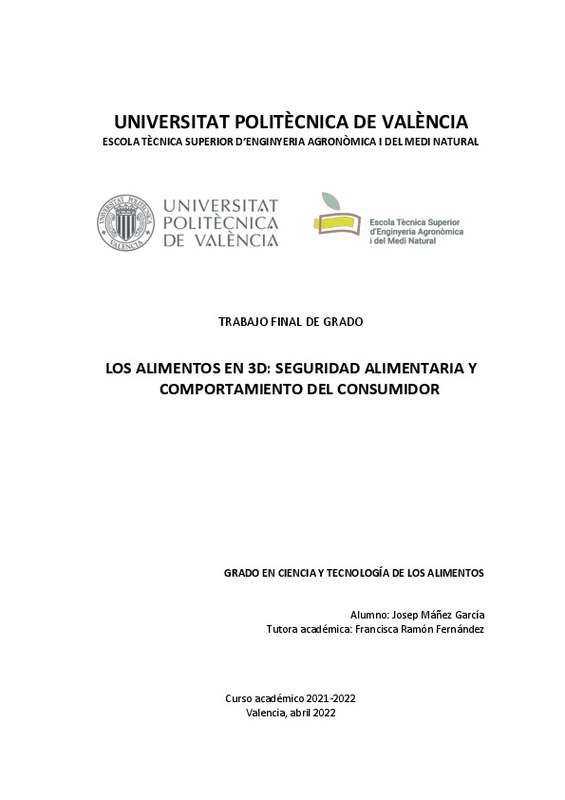JavaScript is disabled for your browser. Some features of this site may not work without it.
Buscar en RiuNet
Listar
Mi cuenta
Estadísticas
Ayuda RiuNet
Admin. UPV
Los alimentos en 3D: Seguridad alimentaria y comportamiento del consumidor
Mostrar el registro completo del ítem
Màñez Garcia, J. (2022). Los alimentos en 3D: Seguridad alimentaria y comportamiento del consumidor. Universitat Politècnica de València. http://hdl.handle.net/10251/182641
Por favor, use este identificador para citar o enlazar este ítem: http://hdl.handle.net/10251/182641
Ficheros en el ítem
Metadatos del ítem
| Título: | Los alimentos en 3D: Seguridad alimentaria y comportamiento del consumidor | |||
| Otro titulo: |
|
|||
| Autor: | Màñez Garcia, Josep | |||
| Director(es): | ||||
| Entidad UPV: |
|
|||
| Fecha acto/lectura: |
|
|||
| Resumen: |
[ES] Los alimentos en 3D son un tipo de alimentos que, a pesar de ser desconocidos por la mayoría de la población, en el futuro podrían suponer la forma más habitual de consumo. Esto es debido al rápido aumento de la ...[+]
[EN] Food in 3D is a type of food that, despite being unknown by most of the population, in the future could be the most common form of consumption. This is due to the rapid increase in the world population, so that the ...[+]
|
|||
| Palabras clave: |
|
|||
| Derechos de uso: | Reserva de todos los derechos | |||
| Editorial: |
|
|||
| Titulación: |
|
|||
| Tipo: |
|
recommendations
Este ítem aparece en la(s) siguiente(s) colección(ones)
-
ETSIAMN - Trabajos académicos [3541]
Escuela Técnica Superior de Ingeniería Agronómica y del Medio Natural







